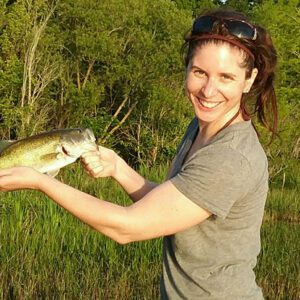NC Wildlife Resources Commission Releases Draft of 2025 State Wildlife Action Plan

The North Carolina Wildlife Resources Commission (NCWRC) has released the draft of the 2025 North Carolina State Wildlife Action Plan (SWAP)—a document that plays a foundational role in guiding wildlife conservation efforts across the state for the next decade.
First developed in 2005, the SWAP is a strategic plan updated every ten years to assess the needs of North Carolina’s wildlife and habitats, identify key conservation priorities, and outline actions needed to sustain species and ecosystems over time. The 2025 edition is the third iteration of this statewide framework.
What Is the State Wildlife Action Plan?
The SWAP serves as North Carolina’s roadmap for managing fish and wildlife species, especially those in decline or at risk. Central to the plan is the identification of Species of Greatest Conservation Need (SGCN)—wildlife species that require targeted attention due to low or declining numbers, habitat loss, or other threats. In addition to providing information on individual species, the plan highlights:
- Priority habitats throughout the state;
- Major threats facing both species and ecosystems (such as development, climate change, invasive species, and pollution);
- Conservation strategies aimed at protecting, enhancing, or restoring these natural resources.
The SWAP is updated by NCWRC in consultation with partners, experts, and the public, and is submitted to the U.S. Fish and Wildlife Service (USFWS) for review and approval. Plan approval enables the state to access federal funding through the State and Tribal Wildlife Grants Program, which supports implementation of the plan’s recommended actions.
The Role of Public Trust and Planning
Wildlife in North Carolina is managed as a public trust resource—held in trust by the state for the benefit of all citizens, now and into the future. Planning tools like the SWAP ensure that wildlife conservation is not only scientifically informed but also transparent and participatory. Making the draft plan available for public review and comment is one way this trust is upheld, allowing stakeholders and citizens to understand and engage with the long-term strategies shaping conservation in their state.
Connections to NCWF’s Mission
The goals outlined in the SWAP intersect closely with NCWF’s own Conservation Impact Plan, which focuses on protecting, conserving, and restoring wildlife and their habitats across the state. Through our network of Community Wildlife Chapters and conservation partners, we work to improve outcomes for wildlife—especially SGCN—through habitat enhancement, policy engagement, education, and on-the-ground projects.
Many of the SWAP’s components—from addressing habitat fragmentation to combating invasive species—mirror NCWF’s priorities and approach. The SWAP helps provide scientific and strategic grounding for this work, ensuring that our collective efforts are aligned with state and federal conservation goals.
Next Steps for the Plan
The draft 2025 SWAP is currently open for public review and comment. Following the comment period, which runs through July 5, 2025, the NCWRC will consider all public input and make any necessary revisions before submitting the final plan to USFWS for approval.
If you are interested in learning more about the SWAP, including the full draft and supporting documents, visit: NCWRC: 2025 Wildlife Action Plan
Written by:

– Bates Whitaker, NCWF Communications & Marketing Manager

– Dr. Liz Rutledge, NCWF VP of Wildlife Resources


